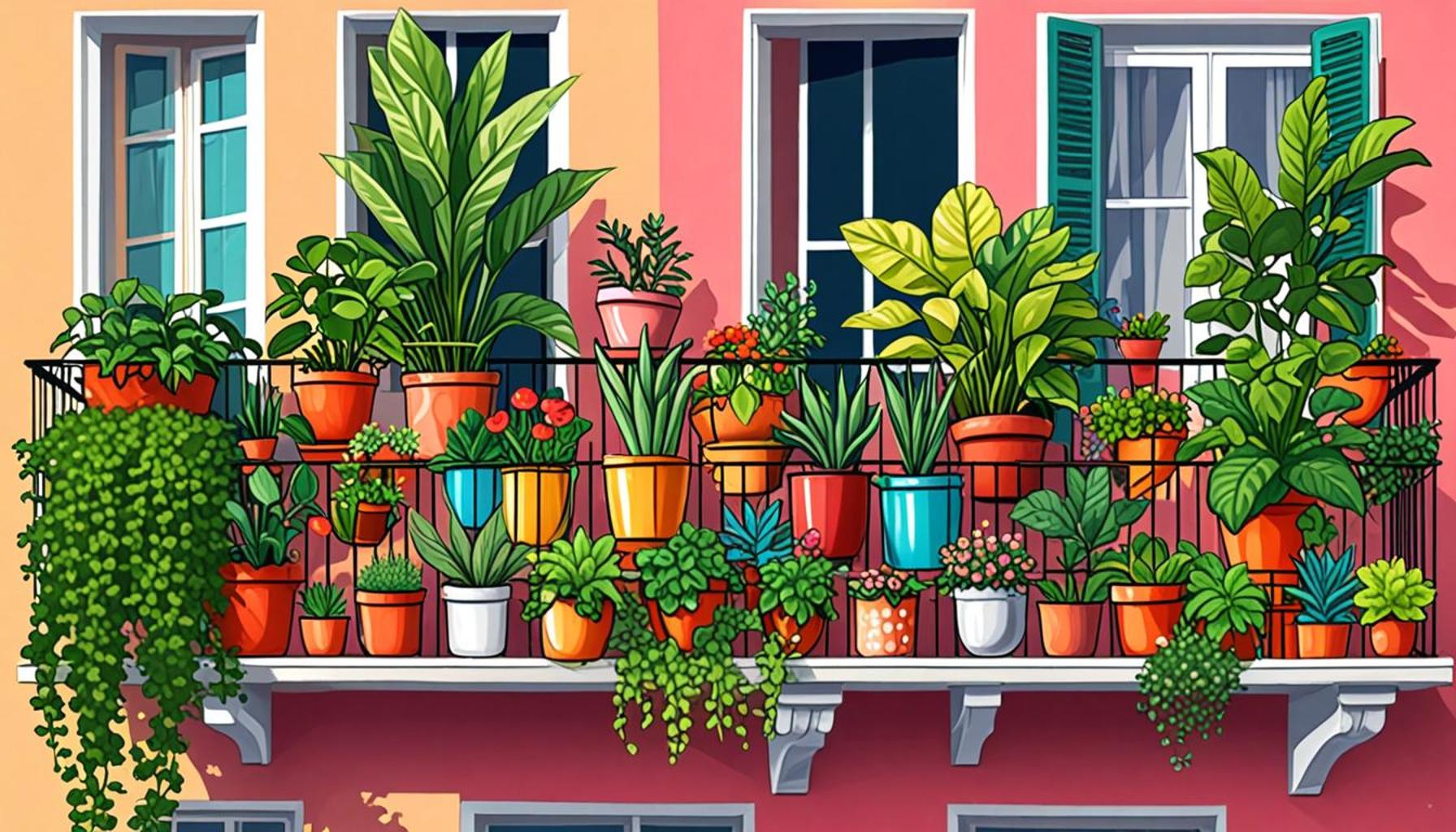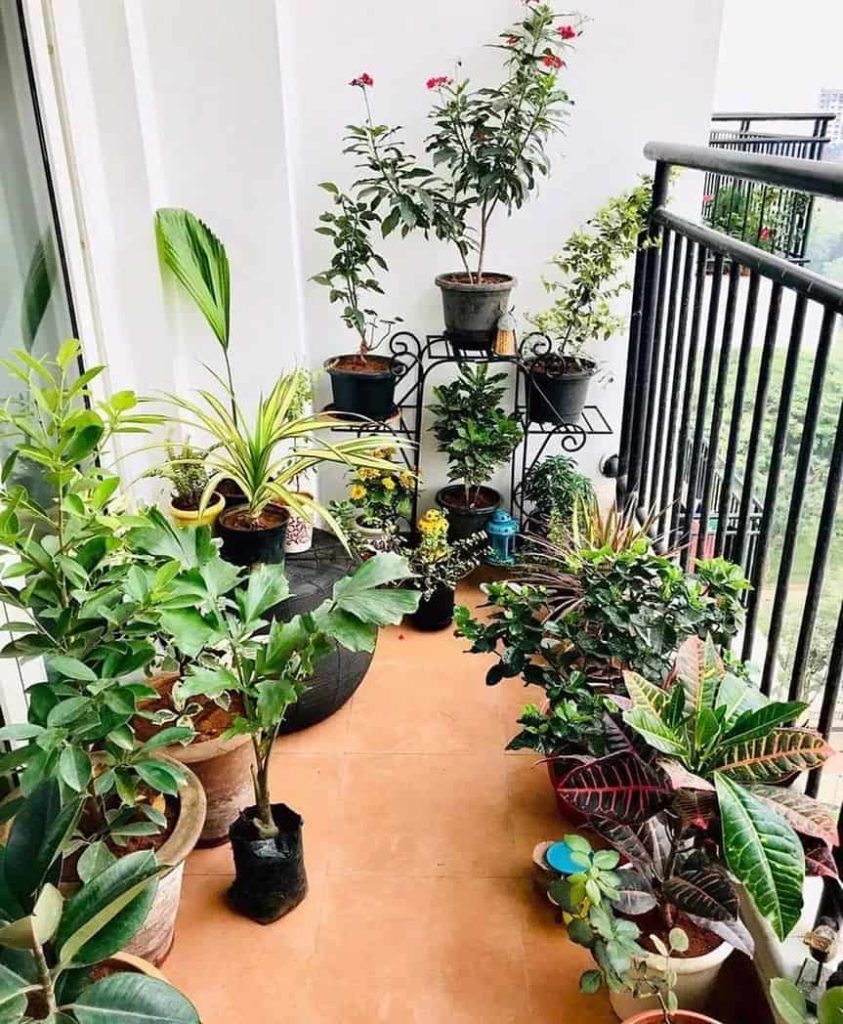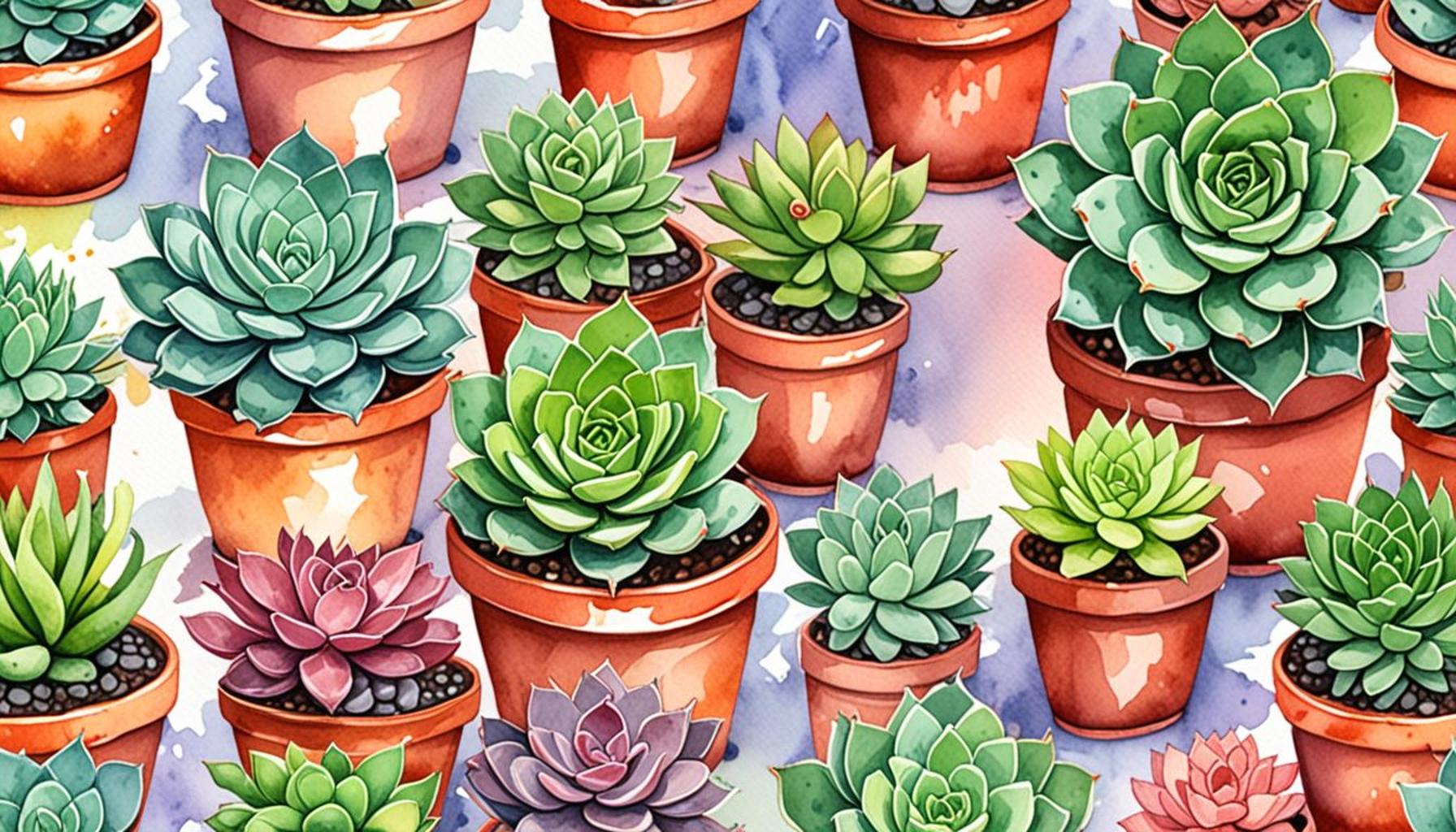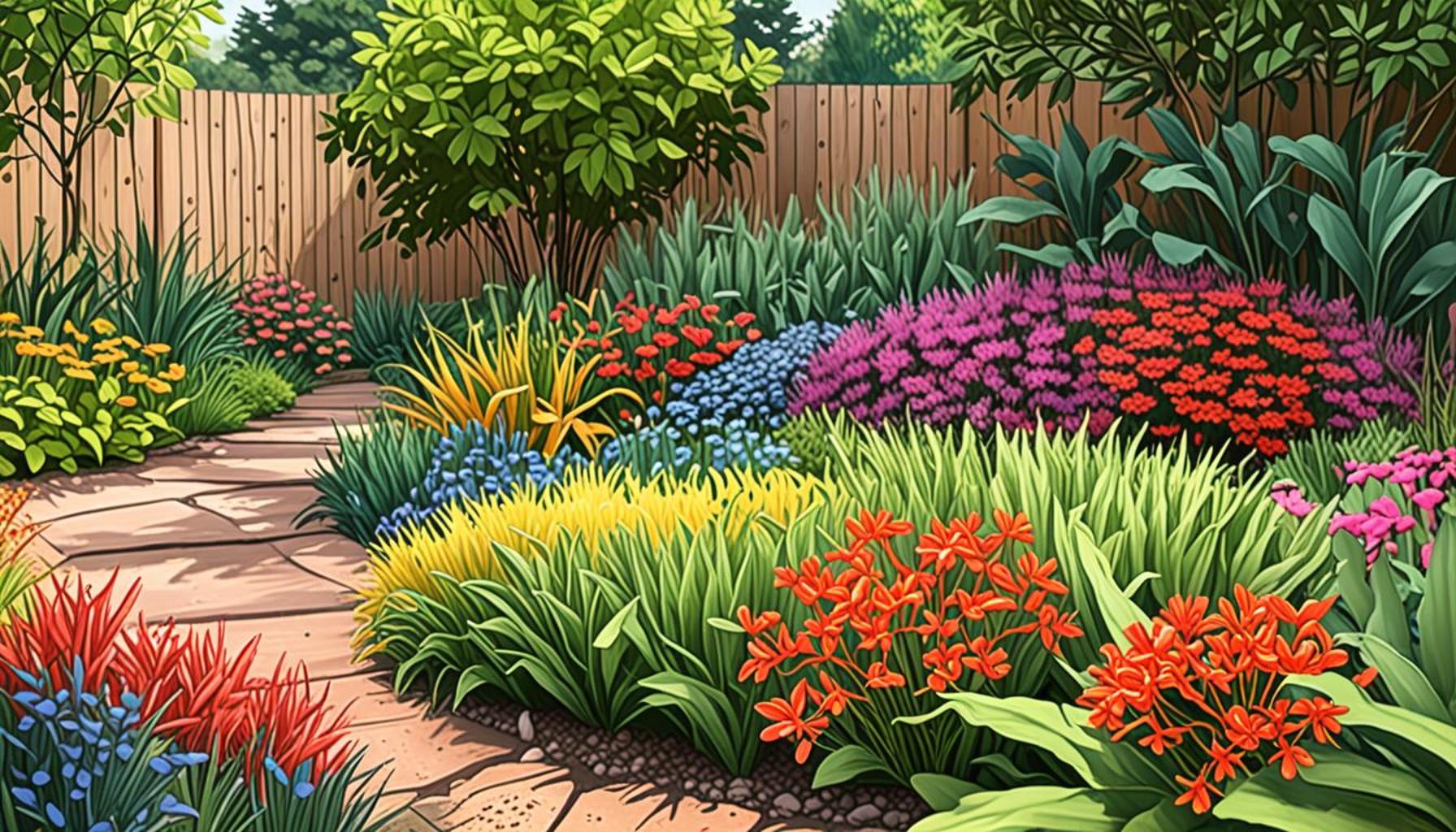How to Select Plants for Balcony Gardens: Tips and Ideas for Beginners

Creating Your Balcony Oasis
A balcony garden can transform a small outdoor space into a thriving green sanctuary. Whether you live in a bustling city or a quiet suburb, selecting the right plants is essential for a successful balcony garden. With a little planning, you can cultivate an area that not only enhances your home but also contributes positively to your well-being, providing a tranquil escape from daily stresses and a breath of fresh air in urban environments.
Why Choose Plants Carefully?
Choosing the right plants involves considering several factors that directly impact their growth and your gardening experience:
- Space: Understand the size and layout of your balcony. For example, if you have a narrow balcony, opt for vertical gardening solutions, such as wall-mounted planters or hanging pots, to maximize your planting area.
- Light: Assess how much sunlight your balcony receives daily. South-facing balconies tend to receive the most sunlight, making them ideal for sun-loving plants, whereas north-facing areas may require shade-tolerant varieties.
- Climate: Choose plants suited to your local weather conditions. Cold-hardy plants like pansies work well in cooler regions, while tropical plants can thrive in warmer climates of the southern United States.
- Maintenance: Consider how much time you can dedicate to caring for your plants. Select low-maintenance options like succulents or drought-resistant ornamental grasses if your schedule is tight.
Popular Plant Options
Here are some great plant choices that flourish in balcony gardens, allowing you to enjoy a vibrant outdoor space:
- Herbs: Fresh herbs like basil, parsley, and mint not only offer culinary benefits but are also easy to grow in pots. Their fragrant scents can enhance your mood and even deter pests.
- Flowers: Brighten your space with colorful options such as petunias, marigolds, and geraniums. These annuals bloom throughout the growing season, providing continuous color and contributing to your balcony’s aesthetics.
- Vegetables: Grow your own fresh produce with crops like tomatoes, peppers, and lettuce. These can thrive in containers and are perfect for beginners looking to supplement their kitchen with homegrown ingredients.
By understanding your unique space and preferences, you’ll be well on your way to creating a vibrant balcony garden. Consider incorporating elements like a comfortable seating area or decorative accessories, such as lanterns or wind chimes, to further enhance your outdoor experience. Explore how you can effectively plan your garden, making the most of your limited space while enjoying the myriad benefits of gardening right at home. Dive into this rewarding endeavor and discover the joy of nurturing plants and the serenity they bring to your daily life.

DIVE DEEPER: Click here to uncover more insights
Understanding the Essentials of Plant Selection
As you embark on your journey to create your very own balcony garden, it is vital to grasp the fundamental principles that govern plant selection. A well-planned garden not only thrives but also reflects your personal style and preferences. Let’s delve into the critical elements that will guide your decision-making process when choosing plants for your balcony.
Assessing Your Environment
The first step in selecting plants is to closely examine your balcony environment. Take note of the following:
- Sunlight Exposure: Observe how sunlight interacts with your balcony throughout the day. If your balcony receives direct sunlight for more than six hours, you can select sun-loving plants, such as petunias or zinnias. In contrast, if your space is shaded for the majority of the day, consider shade-tolerant plants like ferns or hostas.
- Wind Resistance: Balconies can be breezy spots, especially if located on higher floors. Selecting sturdy plants capable of withstanding wind is crucial. Consider using stronger varieties like ornamental grasses that can add texture while enduring the elements.
- Space Considerations: Evaluate the available space to determine the size and number of plants you can accommodate. For compact spots, opt for dwarf varieties of popular plants or utilize vertical gardening techniques like trellises and cascading planters.
Choosing the Right Type of Plants
Once you have assessed your environment, it’s time to explore the various types of plants that can flourish on your balcony:
- Succulents: Ideal for low-maintenance gardening, succulents are available in numerous shapes and sizes. They require minimal watering and can thrive in smaller pots, making them perfect for busy individuals.
- Flowering Annuals: Incorporating annual flowers such as marigolds or calibrachoa can provide vibrant colors and lively energy to your balcony. These plants bloom throughout the season, ensuring your garden remains bright and cheerful.
- Tropical Species: For those in warmer climates, consider adding tropical plants like hibiscus or bird of paradise. These exotic options can provide a lush feel and flourish in bright, humid environments.
In essence, taking the time to evaluate your balcony conditions and understanding the types of plants that thrive in those circumstances significantly enhances your chances of success. As you explore various options, keep in mind your aesthetic preferences and the ambiance you wish to create. The right plant combination can make your balcony not just a garden but a personal retreat, harmonizing nature with your living space.
How to Select Plants for Balcony Gardens: Tips and Ideas for Beginners
When embarking on your balcony garden journey, choosing the right plants is crucial for cultivating a thriving oasis. Below are essential tips to guide your selection process.
1. Assess Sunlight Availability
Understanding the amount of sunlight your balcony receives throughout the day is fundamental. This will help you choose plants that can thrive under those conditions. For example, full-sun plants need at least 6 hours of direct sunlight daily, while shade-loving plants do well in darker areas.
2. Consider Space and Layout
Balconies often come with space constraints. Therefore, selecting compact plants like herbs, succulents, and small flowering plants can maximize your gardening area. Vertical gardening solutions, such as wall-mounted planters, can also help to save space while adding visual interest.
3. Choose the Right Containers
Container selection is just as important as plant selection. Ensure that your pots have adequate drainage holes to prevent water logging and root rot. Utilizing materials like terracotta, wood, or metal can also affect the temperature in which plants grow, so choose wisely based on your climate.
4. Understand Plant Maintenance
Selecting low-maintenance plants can be beneficial, particularly for beginners. Plants like snake plants, pothos, and various herbs require less frequent watering and care, allowing you to enjoy your garden without the burden of excessive upkeep.
5. Seasonal Considerations
Keep in mind that some plants flourish better in certain seasons. For instance, petunias and geraniums are summer favorites, while pansies and violas do well in cooler months. Rotating plants seasonally not only keeps your garden looking fresh but also ensures continuous blooms.To complement these tips, below is a table summarizing some of the advantages of selecting the right plants for your balcony garden:
| Category | Benefits |
|---|---|
| Aesthetic Appeal | Enhances the visual beauty of your living space. |
| Improved Air Quality | Plants help filter harmful toxins and release oxygen. |
| Stress Relief | Gardening activities promote relaxation and mental well-being. |
By taking these facets into account, you’ll set the stage for a flourishing balcony garden that can bring joy, beauty, and even fresh herbs or vegetables to your home. Don’t hesitate to experiment with different types of plants to find what suits your taste and lifestyle best.
DISCOVER MORE: Click here to learn how beneficial insects can enhance your garden
Creating a Balanced Ecosystem
After identifying suitable plants for your balcony garden, the next crucial step is ensuring a harmonious ecosystem. By selecting plants that can coexist and complement each other, you can create an environment that flourishes while making the most of your available space.
Pairing Plants Wisely
The art of pairing plants involves considering their growth habits, light requirements, and water needs. Mixed gardens can be both beautiful and functional. For example, combining herbs with flowering plants not only adds visual interest but also attracts beneficial insects, such as pollinators, which help your plants thrive. Here are a few pairing suggestions:
- Herbs and Flowers: Grow aromatic herbs like basil or thyme next to colorful flowers such as geraniums or calendula. The contrast in textures and colors creates a lively composition.
- Upright and Cascading Plants: Utilize vertical gardening strategies by mixing trailing plants like sweet potato vine with upright species such as tomatoes or petunias. This layering enhances visual appeal while optimizing space.
- Vegetation and Florals: Consider incorporating edible plants, such as strawberries and lettuce, alongside traditional ornamental flowers to create a garden that is not only attractive but functional.
Soil and Fertilization Strategies
Choosing the right soil mix is crucial for your balcony garden’s success. Most container plants thrive in a lightweight, well-aerated potting mix that promotes drainage while retaining necessary moisture. Additionally, consider the following tips regarding soil and fertilization:
- Soil Quality: Invest in high-quality potting soil that is enriched with organic matter. This ensures the nutritious foundation your plants need to thrive. Specialty mixes are also available for specific types of plants, such as cacti or succulents.
- Container Size: The size of your container can significantly impact root development. Larger containers offer more soil volume, reducing the frequency of watering, while smaller ones tend to dry out faster.
- Regular Feeding: Apply a general-purpose liquid fertilizer every four to six weeks during the growing season. This provides essential nutrients, supporting healthy growth and flowering.
Seasonal Plant Selection
Your balcony garden can flourish throughout the year when you strategically select plants based on seasonal changes. Understanding growing seasons will allow you to rotate plants effectively:
- Spring Planting: Start with cold-tolerant plants such as pansies or snapdragons. As the temperatures rise, transition to summer favorites like petunias and sunflowers.
- Fall Harvest: Embrace the autumn season by planting kale, chrysanthemums, and ornamental cabbages. These choices add vibrant colors while also being frost-resistant.
- Winter Preparations: If you live in an area with harsh winters, consider using hardy evergreens or indoor-friendly plants such as peace lilies and spider plants that can thrive indoors until spring returns.
By considering plant pairings, soil quality, and seasonal selections, you can create a more diverse and thriving balcony garden. The intertwining of aesthetics, practicality, and ecological balance fosters not just a garden but an inviting haven that showcases the beauty of nature right outside your door.
LEARN MORE: Click here to discover the benefits of crop rotation
Conclusion
Creating a vibrant and flourishing balcony garden is not only an enriching experience but also an art that combines careful planning and creativity. As beginners, understanding how to select plants based on your specific environment—considering factors like sunlight, space, and climate—is crucial to crafting a lively green space. By wisely pairing plants, you can maximize both aesthetic appeal and functional benefits, such as attracting pollinators or maximizing limited space.
Moreover, the importance of quality soil and fertilization cannot be overstated. A nutrient-rich potting mix and regular feeding strategy serve as the backbone of your balcony garden’s success. Awareness of seasonal plant selection further enhances your garden’s vibrancy throughout the year, allowing for continuous growth and color changes.
In summary, your balcony garden should not just be a collection of plants but a reflection of your personal style and a celebration of nature’s beauty. Embrace the journey of gardening, enjoy the process of trial and error, and don’t hesitate to experiment with different plants and combinations. As your skills grow, so will your plant selection, leading to the ultimate goal—a flourishing oasis that you can cherish right outside your door. Explore, learn, and let your balcony evolve into a thriving sanctuary that harmonizes beauty, functionality, and joy.


